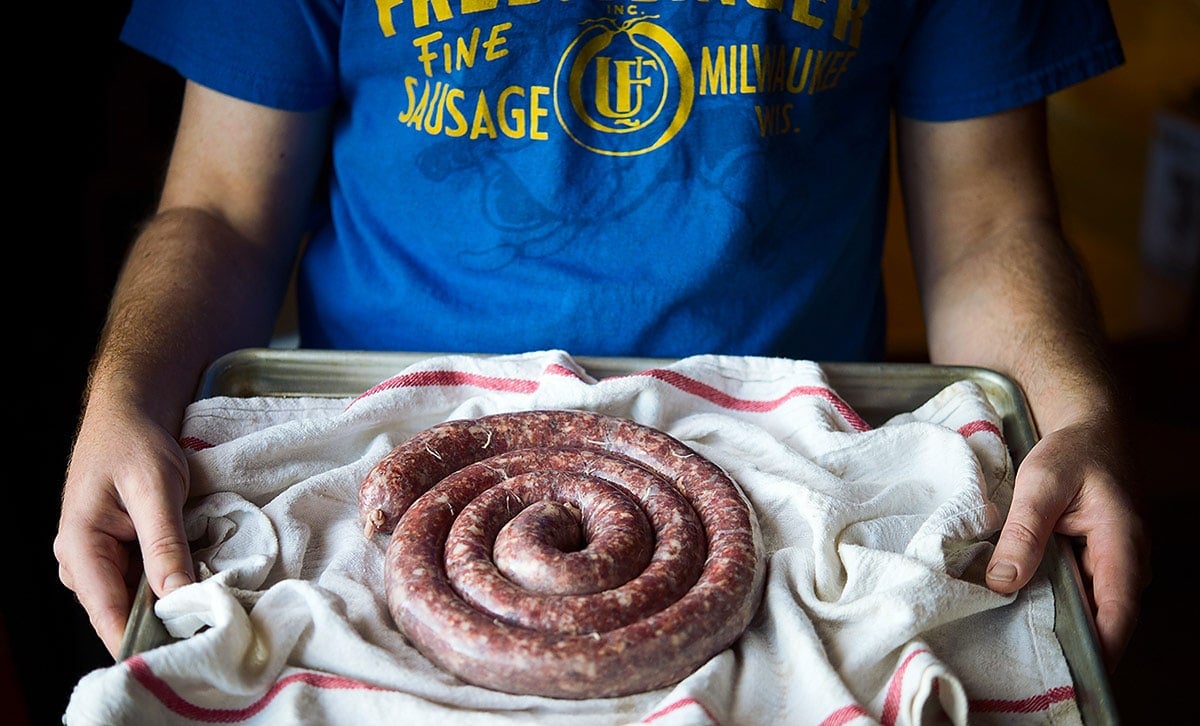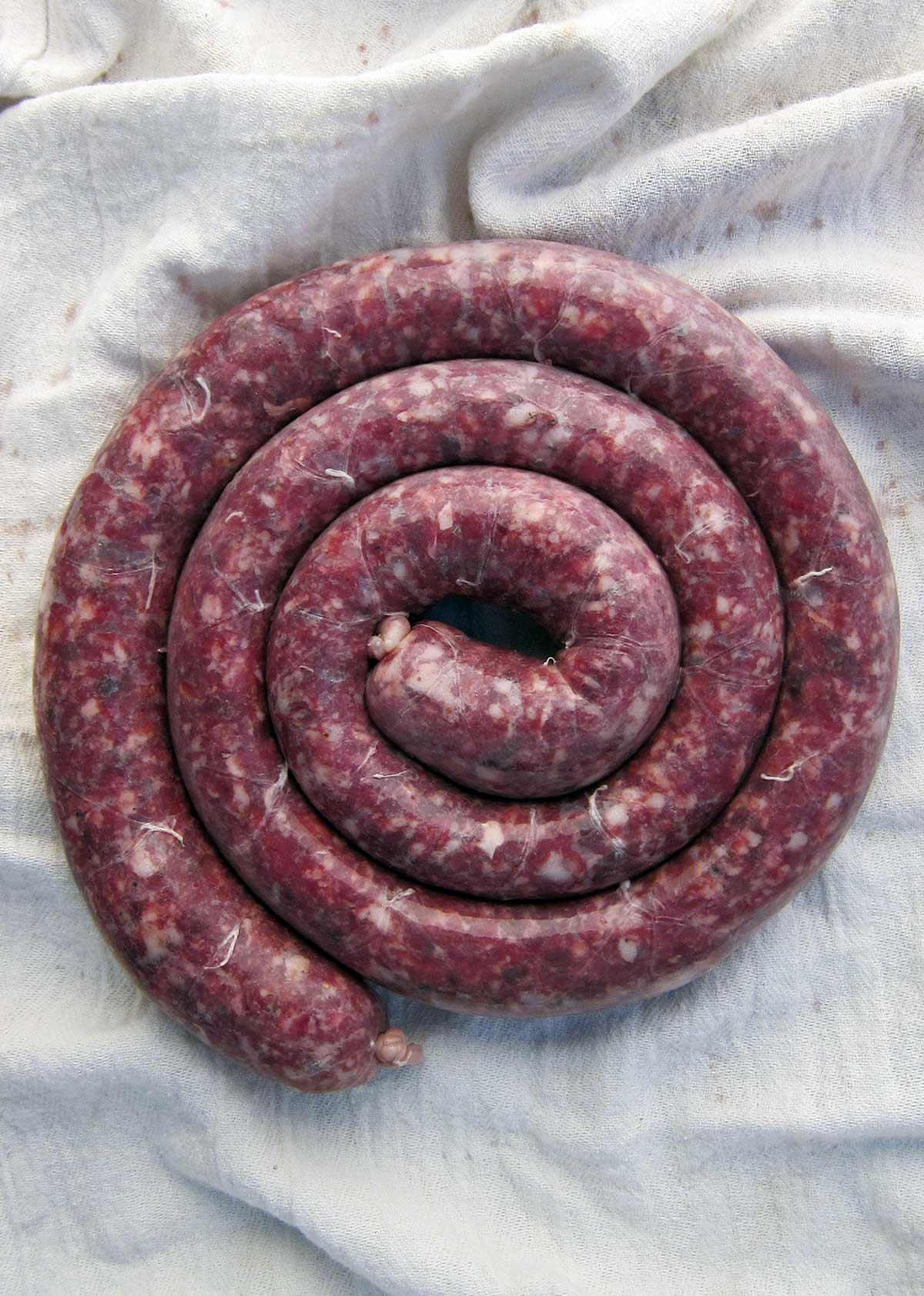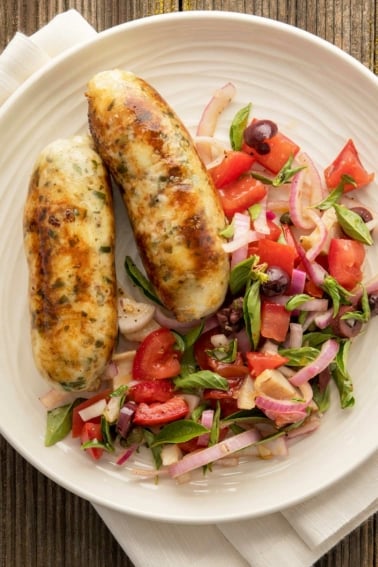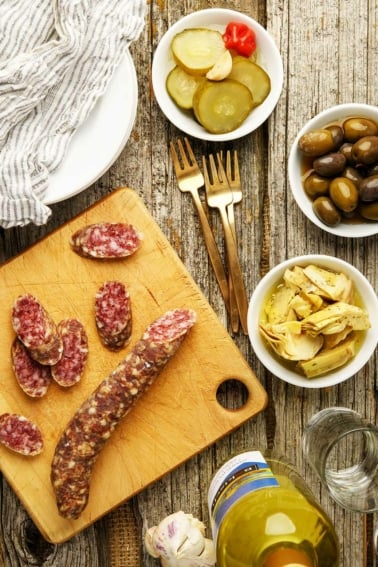Boerewors and Kindness in the Dark
May 12, 2014 | Updated February 26, 2021
As an Amazon Associate I earn from qualifying purchases.
It’s cold. Colder than I ever expected Africa to be. I sit on a box in the tiny yard behind my host’s home, a forbidding, one-story concrete box with only few windows, each set higher than a man. There are bars on them. A six-foot concrete wall surrounds the yard, shielding me from the rest of Kliptown. I am shaving.
I trim my stubble with a disposable razor used I-don’t-know-how-many-times, holding a broken mirror in my other hand to see. A bowl of frigid water sits between my legs. I have no shaving cream. A little boy, who his mother says is ten but who looks half that, stares at me while I shave. I smile at him. He doesn’t smile back. He keeps staring. As I finish, he reaches out a little hand to touch me. An act of affection? No. He smears his hands across my forearm, as if trying to wipe something off. My white skin, burned brown by the African sun, doesn’t budge.

I’m startled by a girl’s voice behind me. “He’s never seen a white man up close,” his sister says. “The other boys tell him that white men are devils, that they paint their skins to scare us.” Images of Apache and Sioux warriors in warpaint burst into my mind, and I smile at the irony.
Their mother, Mary, appears at the back door. “It’s light enough. We can go now.” I rise to leave and the boy’s sister, whose name is lost to me, touches my arm. “Thank you for cooking for us last night.”
It was the least I could do.
This memory, this cold morning in a suburb of Soweto, still rings sharp in my mind nearly 20 years later. I was a young reporter then, eager to make a name for myself. I’d studied South Africa in college, and had just earned a graduate degree in African history from the University of Wisconsin. I spoke Swahili. My dream was to become a foreign correspondent, and I needed to get overseas.
It was early summer, 1995. Nelson Mandela had just been elected as the first black president of South Africa the previous May, and another election loomed. This one appeared to be trickier than the national ballot — it was for all the local political offices, down to municipal elections. It would be mayhem.
I’d secured a few contracts to write stories about the election from some small magazines; enough to pay for the trip at least. I had no firm plan, but I knew I needed to go to Soweto, the black township outside Johannesburg legendary both for violence and the birth of the anti-apartheid movement. I was tagging along with a group of teachers and college professors, and one of their fixers decided to help me out. This was Mary, and she lived in Kliptown, southeast of Soweto.
South Africa in 1995 was a dangerous place. I’d already been mugged at gunpoint a few days before, as I walked through a park near my hotel in Jo’burg. A gang of tsotsis — South African slang for gangsters — surrounded me and one of the teachers. None were taller than my shoulder, and I could easily have kicked the shit out of any one of them. But the one holding the janky old revolver had my attention. I was virtually certain it did not work, but I wasn’t keen on finding out for sure.
I knew the drill, having been mugged several times in New York City as a teenager. I raised my hands and they took my wallet, which I’d already cleared of any valuables except for a hundred rand or so (rand is the South African dollar).
This had happened within sight of an international hotel. Hanging out in Soweto, where police protection would be non-existent, was an order of magnitude more dangerous. Mary drove me to her home. “Don’t look out the windows and don’t take pictures,” she said. Taking a white man home to Kliptown was risky, but she knew a bunch of people who would be willing to talk with me about the upcoming election.
The interviews went really well, but they ran long; it wasn’t every day that Sowetans got a chance to talk to American media, and they had great stories to tell. I went through two pens taking notes. Mary was getting agitated. We needed to leave before sundown. “It is not safe for you to be here at night,” she said.
But night caught us. Mary was visibly nervous as we got into her car. She told me to keep my head down as we drove. Unlike the mugging, this time I was actually scared. She said that tsotsis would stop the car, rob and beat me if they found me in Kliptown at night, or even worse. A white social worker had been “necklaced” the previous week. Necklacing is where they soak a car tire in gasoline and jam it around your arms and shoulders, then set it on fire. A horrible, horrible way to die. I shuddered.
She stopped the car and whisked me into her home, a squat concrete blockhouse. As forbidding as the night outside had seemed, the inside of Mary’s house was its equal and opposite: Music was playing, the walls draped with colorful cloth, shelves of pictures and knick-knacks, her husband Ben lounging on a well-loved couch with an old TV blaring the news, kids playing a board game in another room.

Mary spoke to Ben in what I assumed was Xhosa; I knew they weren’t Zulu, that’s all. Ben looked at me, concerned. I could tell they were arguing as calmly and as quietly as they could, knowing that while I couldn’t understand their language, I wasn’t an idiot. After a few minutes, Ben relented. He walked over the the fridge and opened up two Castle lagers. He handed me one.
“Are you hungry?” Mary asked. I was, but I had a thought. I’d recently left Wisconsin, where I had worked at an Ethiopian restaurant. I knew how to cook, and I knew how to cook African food. Maybe I could cook for them? Mary laughed. “What do you know about cooking?” Apparently men weren’t well-known cooks in her world. I told her I’d been a cook in a restaurant. She insisted that she cook for me, and I insisted that I cook for her, as a small show of appreciation for keeping me safe. “OK, OK,” Mary said. “You know how to cook boerewors?”
She presented me with a big coil of sausage. How hard could it be? “Sure,” I said. I looked in their fridge and in their pantry. There were some unknown greens, beans, onions, a few potatoes. Not many spices. Nothing I could really make Ethiopian food with, but no matter. I set to work.
It was a simple affair. I cooked the greens soul food style, like collards, caramelized some onions and seared the boerewors as a whole coil in their largest frying pan. Everything came out well, but it’s the sausage I remember most. It tasted a lot like the brats I’d eaten in Wisconsin, only with something different. Coriander, maybe? It didn’t matter. It was good, simple, hearty food, and the whole family liked it.
After dinner we watched the news on television. It was indeed mayhem. The elections were still some months away, but Zulu were fighting Xhosa in Durban, whites were circling their wagons in tight communities now that their position had diminished, and Cape Town was suffering from riots and yet another crime wave. I told them about the mugging, and about how nasty New York City had been when I was growing up in the early 1980s. After a few more Castle lagers, I went to sleep in a back room on an old Army cot. As I drifted off, I heard gunfire outside. Not close, but close enough. I did not sleep well.
The next morning, Mary dropped me off at my hotel. I thanked her over and over for all her help, and her hospitality. She shrugged it off. “Just don’t forget us,” she said as she shut her car door to drive away.
It’s been almost 20 years, Mary Mbotho. I have no idea where you are now, if you are even alive. But I haven’t forgotten you, your family, or your hospitality. Thank you.
South African Boerewors Sausage
Ingredients
- 4 pounds pork or wild boar or venison, or a mixture
- 1 pound pork fat
- 35 grams kosher salt
- 10 grams of cracked black pepper, about 1 tablespoon
- 20 grams of coarsely ground coriander seed, about 3 to 4 tablespoons
- 1 gram of ground clove, about a teaspoon
- 3 grams of ground allspice, about 2 teaspoons
- 2 teaspoons brown sugar
- 1/4 cup malt vinegar
- 1/4 cup brandy
- Hog casings
Instructions
- Get out about 10 feet of hog casings and soak them in warm water.
- Cut the meat and fat into chunks you can fit into your meat grinder. Mix together the salt, pepper, coriander, clove and allspice, then mix this with the meat and fat until every piece has a little on it. Refrigerate overnight if you want, but let it marinate at least an hour or so; this helps develop myosin in the mixture, which helps the texture of the finished sausage. When you are ready to grind, put the meat in the freezer until it is between 30°F and 40°F. Put your grinder parts (auger, dies, blades, etc) in the freezer, too, and put a bowl in the fridge.
- Grind one-half of the mixture through the coarse die on your grinder, and half through the fine die. This creates a more interesting texture. If your meat mixture is still at 35°F or colder, you can go right to binding. If it has heated up, you need to chill everything back down. Use this time to clean up the grinder.
- Once the meat is cold, put it in a large bin or bowl and add the sugar, vinegar and brandy. Mix well with your (very clean) hands for 2 to 3 minutes — a good indicator of temperature is that your hands should ache with cold when you do this. You want to to mix until the meat binds to itself. You can also do this in a stand mixer set on its lowest setting, but I find you don’t get as good a bind as you do when you do this by hand.
- You now have boerewors. Most people stuff this into long coils of about 1 to 2 pounds each. Stuffing sausage is easier with two people, one to fill the links, the other to coil, but I do it solo all the time. Stuff the links well but not super-tight, as you will not be able to tie them off later if they are too full. Don’t worry about air pockets yet. Stuff the casing until you get a coil about a foot wide, leaving lots of room on either end to tie them off; I leave at least three inches of unstuffed casing on either end of the coil. Tie off one end of the coil. Gently compress the sausage in the casing from the other end. Look for air pockets. To remove them, set a large needle or a sausage pricker into a stovetop burner until it glows (this sterilizes it), then pierce the casing at the air pockets. Tie off the other end of the coil and repeat with the rest of the sausage.
- Set your coil on a rack for an hour or so to dry. You can do this overnight in a fridge if you want. Once dried a bit, the boerewors can be refrigerated for up to a week, or frozen for up to a year.
Notes
Nutrition
Nutrition information is automatically calculated, so should only be used as an approximation.






seasoning is very similar to my recipe with following exceptions.
50g ground coriander and some Worcestershire sauce adjusting for liquids
your ingredients look great but this is a pork brat that tastes like boerewors. the problem here is that you are way over mixing. You should not put this in a mixer with a paddle attachment for 2+ min, the texture will be wrong for authentic boerewors. Boerewors is a very loose sausage in a casing. You want to mix this by hand, as little as possible so that no protein extraction really occurs. the end product is almost like ground meat in a sausage casing, not dense brat texture caused by protein extraction.
I rarely read the intro to a recipe online, but yours I read twice. This was my first attempt making a sausage of any kind and it couldn’t have been more successful. It tasted just like the wors I enjoyed when I lived in SA years back. The second time around, I swapped out the brandy for red wine (as suggested by an old SA Wine magazine article) and it was equally as delicious. The brandy seemed to taste more authentic to me, but the wine batch was a hit with friends who had never had the opportunity to eat boerewors before. As a current Milwaukean, I appreciate your Usinger shirt!
Thank you for sharing your story and your recipe!
I had some “grinding” venison left over from last season and a drive to finally finish that chore. My buddy, Chris, was supposed to come up with an idea for the roughly 15 pound batch of sausage. His only idea was to bring a bottle of Old Elk sour mash bourbon.
We settled on this recipe because it intrigued us and I had everything except malt vinegar and brandy. We subbed in apple cider and the aforementioned Old Elk.
This sausage turned out great and definitely unique. We really enjoyed the slightly sour flavors when crossed with “sweet” spices.
Thank you for another great recipe!
My attempt to find just lbs of wild boar to make this recipe turned into a purchase of 3 butchered 100 lb (rail) wild boar and we had a good old fashion work bee with 3 families butchering and making a variety of sausage. And the boar worked great with this recipe. Thanks Hank, you are always an inspiration.
Can I use ground coriander instead of roasted ground coriander seeds? Can you suggest a conversion? Thank you.
Donna: Yes, of course. I assume you are meaning ground coriander seeds, yes? Not the dried leaves? Because no, you can’t use the leaves, which we call cilantro. There is no substitute, but you can leave it out if coriander seeds are hard to find where you live.
Great recipe. I tried it this weekend, came out great but a little dry inside. Any tips on how to make it remain moist…?
Simbarashe: Use more fat in the grind. You might have been low on it in your mix.
Awesome story Hank. If only the world understood the conflict the way it actually went. I made this recipe this week and love it. Thank you.
Thought you might like to try another recipe:
Boerewors – Beef and Venison.
The following quantities are based upon a 1Kg meat mix so multiply by the actual weight that your combined meat weight comes in at. I used a 50/50 mix of beef (topside or silverside) to venison which was fantastic but expensive in the UK ! A mixture of 60/40 would obviously be more economical.
As both meats are lean fat was added. The fat used was a soft beef fat and in my case came from above the sirloin. This melted nicely within the boerrie and kept it moist.
This mix does not make a good dry wors unless the fat is left out.
Quantities
1 kg Combined beef & venison
200g Soft beef fat
20ml Coriander seeds roasted lightly and ground freshly.
1.75ml Ground Cloves
1.0ml Ground Nutmeg
10ml Salt (table)
5ml Ground Black Pepper
5ml Ground Allspice
5ml Brown Sugar
5ml Brown Vinegar.
Method
Course (as large as you can go or cut into approx. 10 – 12mm pieces) grind meat and fat but keep back approximately 50g of the fat for later.
Mix all dry ingredients together well and sprinkle over meat using a carving fork or similar to turn the meat to get full coverage. Cover with plastic wrap and place in refrigerator for 12 hours or overnight.
Place in deep freeze for 30 minutes whilst setting up mincer with a 6 or 8mm hole plate. Mince all and then change plate to a 4mm and grind 20 – 30% of the meat after another 30 minutes in the deep freeze. Mix the finer minced meat into the courser again using a carving fork or similar. From the soft fat saved earlier cut this into small 3mm cubes (you might find it easier if you freeze it) and add to the final meat mix distributing as much as possible. This keeps the boerie moist when cooking it.
After another 30 minute session in the deep freeze (optional) fill into hog casings and leave in the refrigerator for another 12 hours or overnight. Happy braai-ing ! Enjoy.
Notes:
Unlike bought spice mixes there are no msg’s or preservatives in this so cook soon after making or deep freeze for later use. It freezes well.
Keeping the meat cold assists in the mincing process.
Important to use a good quality natural hog casing.
This would work well for dry wors but cut out the added fat as it may go rancid.
Enjoyed your story. My 30 plus years of sausage making started when I came back from two years in South Africa. Love the boerewors. My wife’s friend married a South African and gave me a recipe. The stuff is excellent.
I’m confused about your measurements. If 10 grams is about 1 Tablespoon how can it be that 20 grams is 3-4 tablespoons?
Nancy: Go with grams. That’s the most accurate. But to answer your question, not every substance has the same ratio of volume to weight. To imagine this, look at table salt vs. kosher salt. Both salt, but because of how they’re cut, they are vastly different in terms of volume when equal weights are measured.
Hank
I am so glad I came across your website. I was searching for homemade sausage recipes and ideas and found you! My first attempt at sausages were your boerewor recipe and oh my gosh they are fantastic! I haven’t eaten the actual sausage yet, I fried off a bit of the ground to check the seasoning. Tomorrow is sausage day.
Thanks for your stories and recipes!
south african wors makers ad a good amount of crushed ice to the mix whilst grinding. this helps to lower the temp and also adds moisture to the sausage
Hank
Great website and I admire your philosophical outlook on cooking.
A minor technicality, but traditionally boerewors is made with “spec”. Spec is the tail fat of sheep, especially the Demara, Afrikaner or Karakul breeds. The reason spec was used is that it lasts a lot longer than pork fat before going rancid. This was of paramount importance to the Afrikaners when they embarked on the Great Trek, starting in 1835. When they slaughtered antelope/cattle on the Trek, their options were cuts of meat to eat in the next few days, cuts of meat specifically for biltong and cuts of meat that were made into boerewors. By making boerewors with spec if it was available, what was not consumed within a day or two could be hung and air dried like biltong to make droewors (dried sausage). Together with the biltong, this also ensured that those on the Great Trek had ample protein for the very arduous journey they embarked on. Nowadays, most purveyors of boerewors will use pork fat, although any butcher worth their salt will use spec.
Because of this rancid aspect, I am a little concerned about you advocating storing boerewors for as long as 1 year in the freezer. Most recipes I have used do not recommend freezing boerewors longer than three months. I have stored boerewors up to six months and although I have not tested freezing boerewors longer than six months, I would have serious misgivings in doing this. On a minor technicality, essentially under the new regulations promulgated in I think in 1990, your recipe is classified as braaiwors – the sugar and Brandy would downgrade it to braaiwors.
I experienced an attempted mugging downtown Johannesburg in 1982 with two guys with knives, from which I managed to extract myself without any injury to myself. If you thought your experiences in 1995 were bad, Johannesburg in 2017 would really scare you.
Co-incidentally, I am making boerewors (well technically braaiwors because I substitute any liquid with very dry white wine) and English Bangers this weekend. (glad to see you use white pepper in your Bangers) .
Keep up the good work.
Graham
Graham: Thanks for all that info! Don’t be concerned about the quality of vacuum sealed boerewors that’s been frozen. I’ve thawed it out a year later and it was great.
Hank, you need to scorch the coriander before grinding it. put seeds in a clean frying pan, nothing else… turn the heat on and shake about a little to ensure even scorching… when your kitchen smells of the amazing coriander smell… remove and grind… allow to cool before using.
Clair: We call it toasting, but yes, that is a good tip! (Scorching in American English means burning in a bad way)
in south africa you can buy ready ground coriander powder at the indian spice shops. the call it dhania powder. they also usualy sell the dried coriander seeds n large quantities. its quite cheap to buy.
Louis: We have it, too, here in the US.
By the way, in Western Australia they make biltong from Emu, Crocodile & Kangaroo. See website for Absolute Biltong.
I noticed that JP said biltong is never made from anything with feathers! I beg to differ! Ostrich biltong is also a South African classic. They may not make it these days, however it was often sold alongside the usual biltong when I grew up in South Africa.
J. Walker: Good point. I’ve eaten ostrich biltong, too.
Lovely story – come from SA originally, but now live in Namibia. Just made some boerewors and biltong this week – just the plain and simple way – our Biltong contains salt, cracked black pepper and freshly roasted and ground coriander and a sprinkling of brown vinegar. The boerewors is game (oryx) with some beef body fat with the same salt, pepper, coriander and vinegar as the biltong but with some added cloves and – try this – crushed ice. The boerewors then stays juicy when you braai it over an open fire – love it best with bread rolls made on the fire (roosterkoek).
We make boerewors with a mixture of goat meat and pork. It’s great.
I’m South Afrcan and have been wanting to learn how to make boerewors, so this recipe answers a real need for me. Thanks.
Good day Hank. It is fantastic to see a boere wors recipe here. As I am a South African hunter gatherer. I love your site. You sould put a dry wors recipe here for your followers they will love it. Kind regards Pierre